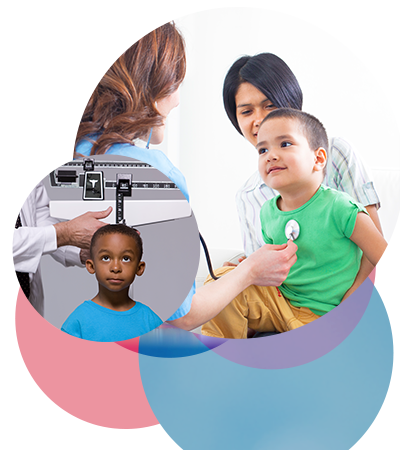Fever Tips
Most health care providers consider a fever to be a temperature of 100.4F (38°C) or higher. The best way to determine if your child has a fever is to take their temperature with a thermometer. Types of appropriate thermometers include:
- Digital: Reading can be taken orally (in the mouth), axillary (under the arm) or rectally (bottom). Checking by mouth is not recommended until a child is four years or older. The same thermometer should not be used for mouth and rectal temperatures.
- Temporal artery: Reading taken across forehead. This thermometer can be used for all ages.
- Tympanic: Reading taken in child’s ear. This thermometer can be used for children six months or older.
Talk to your child’s primary care provider (PCP) if you have questions about what thermometer to use and how to use it.
How to treat a fever
Fever is not an illness: it is a sign that your child’s body is fighting an illness or infection. This means your child’s fever may not need to be treated if they are over six months old, drinking enough fluids, sleeping well and able to play.
Medicines to treat fever
Birth to three months old
Do not give medicine until your child has been checked by their PCP.
Three months to four years old
Tylenol® (Acetaminophen): never give more than what the label recommends.
Four years old and over
Advil or Children’s Motrin (Ibuprofen): follow label instructions.
Tylenol® (acetaminophen): continue to follow label instructions.
Other tips for managing your child’s fever at home
- Allow your child to rest and take it easy. Keep your child home from daycare or school until they have been fever-free for 24 hours without medicine.
- Dress your child lightly.
- Encourage your child to drink plenty of fluids. Offer water, soup, ice pops and flavored gelatin.
- If your child is vomiting or has diarrhea, ask your provider about electrolyte (rehydration) solutions for kids. Do not offer sports drinks or juice since the added sugars can make diarrhea worse.
- Avoid drinks with caffeine since they increase the risk of dehydration.
- Give your child a lukewarm bath. Do not give your child a cold bath, or ice bath since this can raise body temperature. Do not use rubbing alcohol baths since it can cause harm when absorbed through the skin.
Febrile Seizures
Febrile seizures can occur in some children with fevers. These seizures can happen in children between six months and five years old, but most commonly can happen in toddlers 12 to 18 months old. During a febrile seizure, your child may have convulsions (shaking, twitching, jerking), become unconscious (pass out) and roll their eyes (only whites of eyes are visible).
What to do if your child is having a febrile seizure
- Place your child on the floor or ground. Make sure your child is on their side to prevent choking.
- Remove any nearby objects.
- Loosen clothing around the head and neck.
- Observe for signs of breathing problems.
- Keep track of how long the seizure lasts. If the seizure lasts longer than five minutes or your child turns blue, call 911 or take your child to the emergency room.
- Call your child’s provider when the seizure is over.
When to get help
Call your child’s PCP if you are concerned about your child’s fever or your child:
- Looks very sick, is unusually sleepy or extra-fussy.
- Has other symptoms such as a stiff neck, severe headache, sore throat, ear pain, unexplained rash, vomiting or diarrhea.
- Is under two years old and has had a fever for more than a day.
- Is two years or older and has had a fever for more than three days.
- Is any age and has a fever that goes over 104°F (40°C).
- Has a seizure lasting less than five minutes.
- Has a chronic health issue such as cancer or sickle cell disease (a condition in which the red blood cells are not shaped as they should be).
Go to the emergency room right away if your child has a fever and:
- Is three months old or younger and has a temperature of 100.4F (38°C) or higher. Fever in a young baby can be a sign of a dangerous infection.
- Has trouble breathing or has irregular breathing.
- Has a seizure lasting longer than five minutes.
- Develops a purple spotted rash.
- Has blue lips, tongue or nails.
- Has a stiff neck.
- Is acting extremely sluggish or is difficult to wake up.
- Is acting confused.
- Has altered speech or trouble walking.
- Feels pain or tenderness in their stomach area.
- Drools excessively or cannot stop crying.
